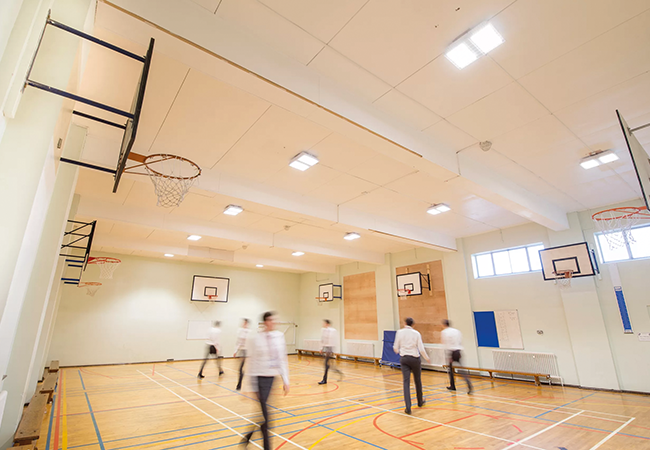

This CPD article examines the important role of lighting in educational environments, emphasising how modern systems can enhance student wellbeing, improve the overall learning experience for both traditional and therapeutic learning spaces, and reduce the operational costs of buildings.
UK primary and secondary school students annually spend around 180 days in classrooms, and their internal environment can significantly impact their academic performance. A 2021 transverse study, employing the massive SINPHONIE1 dataset, highlighted that daylight has the highest impact on overall student progress among all design parameters in schools,2 indicating that larger window areas are advantageous, and that appropriate shading is important.
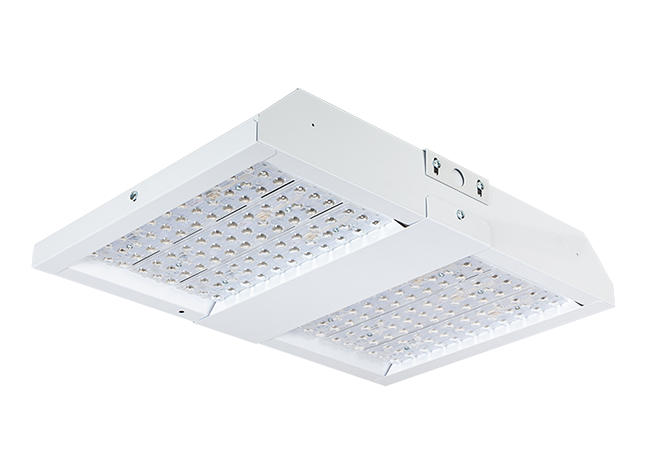
Fig 1 high-output luminaires
The complete lighting solution will influence various factors, including student concentration, behaviour, and overall performance, and the complementary contribution of controlled natural and artificial lighting has been shown to be beneficial.3 A study4 involving 84 pupils in the mid-south region of the USA indicated that a ‘focus’ illumination level of 1,000lx, with a cool temperature of 6,500K, could improve activities that required oral reading fluency (ORF) compared with a ‘normal’ lighting level of 500lx and 3,500K, which would be used for other activities.
The temperature of light
Correlated colour temperature (CCT), measured in degrees Kelvin (K), is used to describe the colour tone of a light source by comparing it with the colour of light emitted by a blackbody radiator (such as is approximated by an incandescent lamp).
2,000K to 3,000K: A warm, yellowish light, similar to the light from traditional incandescent bulbs or a sunset. This creates an inviting atmosphere, and is often used in residential settings, restaurants and hospitality environments.
3,100K to 4,500K: A neutral white light, like natural daylight. Often used in offices, kitchens and workspaces to provide a balance of warmth and coolness.
4,600K to 6,500K and above: A cool, bluish light, like daylight at noon. Creating a bright, alert environment, and commonly applied in commercial, industrial and outdoor applications.
This aligns with findings5 from a series of field and experimental studies showing that appropriate lighting significantly enhances students’ concentration and academic performance.
There are several standards and guides to aid the design and implementation of lighting in educational environments. These include: the 2011 CIBSE LG56 Lighting for Education (currently under review), which provides comprehensive guidelines specifically for educational facilities; the UK DfE School Output Specification Technical Annex 2E – Daylight and Electric Lighting7, which provides the minimum requirements for daylighting and electric lighting in schools (and similar premises); and BS EN12464-1:20218 Lighting of Work Places – Part 1: Indoor Work Places, which specifies lighting requirements for indoor workspaces, including educational facilities.
From the USA, the Illuminating Engineering Society’s Recommended Practice for Lighting for Educational Facilities9 provides specific guidelines for lighting educational spaces, emphasising the impact of lighting on learning and student wellbeing.
Poor lighting can lead to eye strain, fatigue, and diminished concentration,10 while well-lit classrooms with the right balance of natural and artificial light can help students remain attentive and behave positively.11 Managing glare can have a significant impact in educational settings, preventing discomfort and improving visual performance.
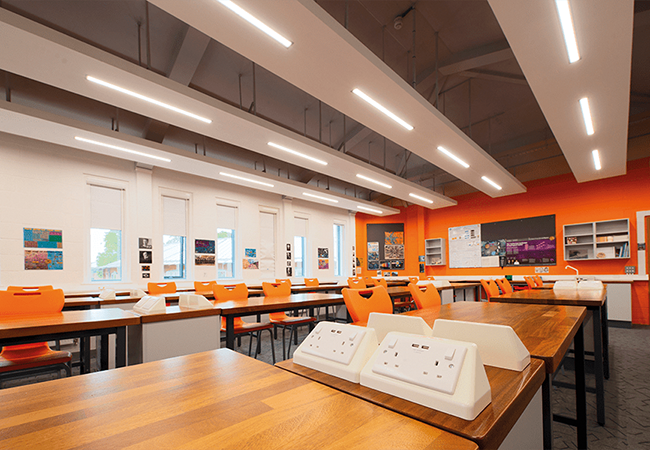
Figure 2: A refurbishment project at the science block of Radley College replaced outdated lighting systems with task lighting installed directly over desks and workspaces, employing luminaires with opalescent diffusers. This LED module delivers CRI>80, CCT of 4,000K and up to 121lm.W-¹
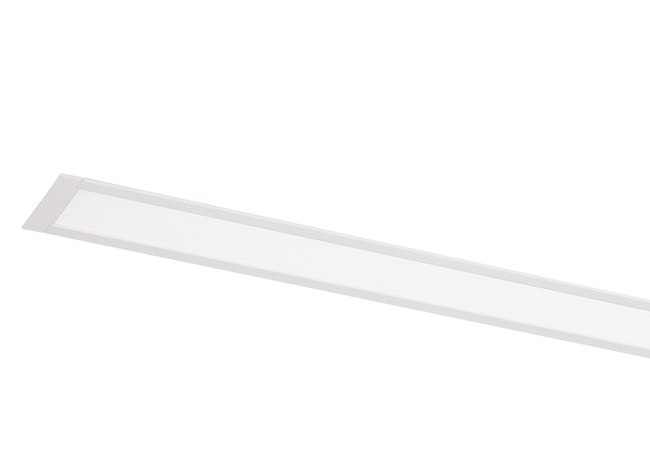
Fig 2: luminaires with opalescent diffuser
The benefits of reducing visual discomfort and improving performance have been studied extensively, showing significant positive impacts on students’ ability to concentrate and perform academically. For example, Winterbottom and Wilkins10 found that poor lighting conditions –including glare from windows and fluorescent luminaires – can cause discomfort and impair visual performance, affecting students’ ability to concentrate and learn effectively.
Human-centric lighting solutions can be designed to mimic the profile of natural light – which is thought to regulate circadian rhythms – reducing early-morning tiredness and boosting alertness throughout the day. The use of lighting with adjustable colour temperatures can simulate natural light patterns, helping students maintain better sleep cycles and overall health.11
Current, commercially available LED technology can achieve luminous efficacies of 140-190lm.W–¹ compared with circa 100lm.W–¹ of common lamps employed from the beginning of this century. This contributes to a significant reduction in the number of required fittings and operational costs. Depending on the choice of luminaire, a colour rendering index (CRI) of greater than 80 is readily available from LED fittings, meeting the typical requirements for educational applications.7
Typically, these modules maintain 70%-90% of their initial lumen output after 50,000 hours of operation – an operational life that goes far beyond that of previous technologies, such as fluorescent lamps, which have a maximum life of 15-20,000 hours. This longevity reduces the frequency of repair and replacement, minimising maintenance costs and disruption in the educational environment.
Diffuser optics for such applications should be designed to minimise glare and control ceiling illumination. This is particularly beneficial in classrooms and lecture rooms, where prolonged exposure to improperly controlled light sources can cause eye strain and reduced concentration. These effects have been measured in the field by employing a combination of subjective reports of discomfort, objective assessments of visual performance, and physiological indicators, such as blink rate and pupil size.
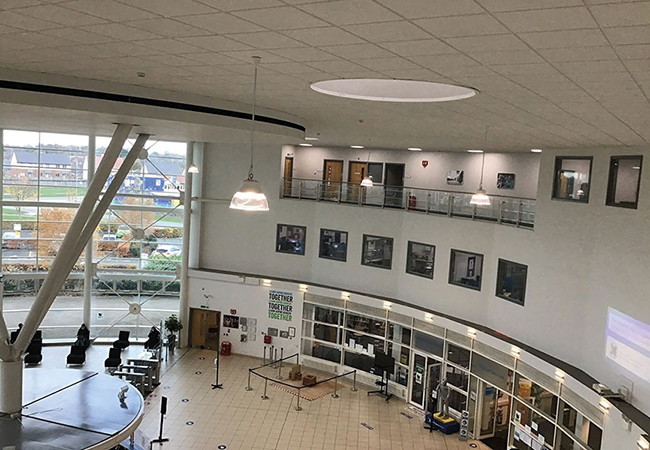
Figure 3: High-output LED modules with a wide-beam optic significantly reduced the number of luminaires required in the refurbishment at Darlington College. This die-cast aluminium body LED module with prismatic polycarbonate diffuser delivers CCT of 4000K and up to 130lm.W-¹
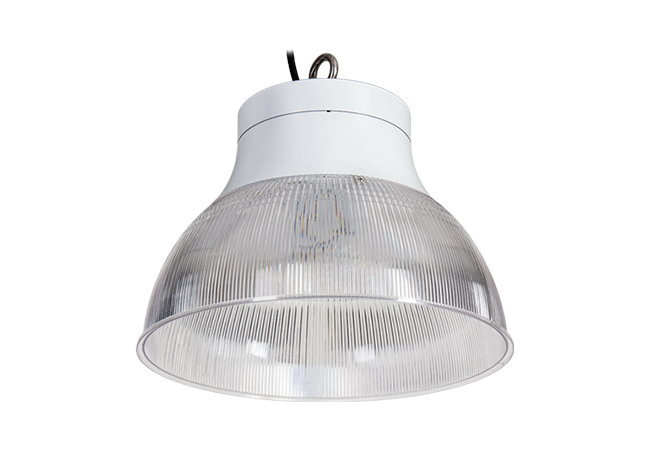
Fig 3: High-output LED modules with a wide-beam optic
As well as providing effective solutions for new-build installations, LED lighting systems can be designed as a replacement for legacy systems to deliver significant energy savings and improve visual comfort, so boosting alertness and wellbeing among students. The controllability of suitably equipped LED luminaires, linked together with systems such as digital addressable lighting interface (DALI), can enable more granular control and monitoring.
This can be used to provide flexible lighting schemes that are readily adjusted – manually or automatically – employing features such as daylight dimming, scene setting and scheduling. Employing such control can optimise the lighting provision based on real-time demand, the availability of natural light and the required occupant experience. Such systems also allow for adaptable lighting environments suited to a range of educational activities. For example, in lecture theatres, scene control – such as dimming controls – can allow lighting to be adjusted for presentations, note-taking or video viewing, providing an optimal setting for each activity.7
Lighting automation can be integrated with other building management systems to optimise energy use and enable enhanced monitoring and maintenance of lighting systems. LED lights with adjustable brightness and colour temperatures have been shown to reduce anxiety, improve task-switching focus12 and create a more inclusive learning environment.
Research indicates that lighting conditions can significantly impact cognitive and emotional states. For instance, appropriate lighting has been found to enhance students’ focus, positively affect students’ concentration13 and reduce anxiety14 by creating a more comfortable and adaptable learning environment. Creating calm areas with low or dim lighting can reduce stress and anxiety.
Lighting can play an important role in creating therapeutic and inclusive classrooms that support the wellbeing of all students, including those with neurodiverse needs. Glare from excessively bright sources of light – natural and artificial – and flickering lights can cause discomfort and disrupt concentration, particularly for individuals with photosensitivity and specific neurodiverse conditions.
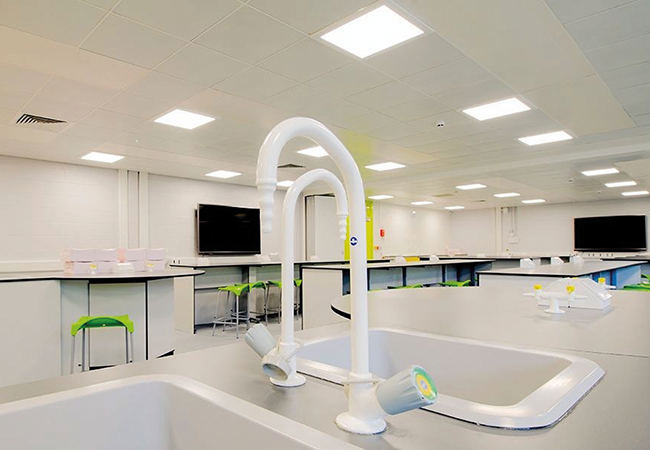
Figure 4: Installation of low-glare luminaires in IT rooms and science labs for Thornleigh Salesian College limited screen glare, delivered uniformity and optimal spacing to prevent shadowing, and provided adequate lighting for detailed tasks. The light delivered from the opal polycarbonate diffuser, CRI>80, CCT of 4,000K up to 120lm.W-¹
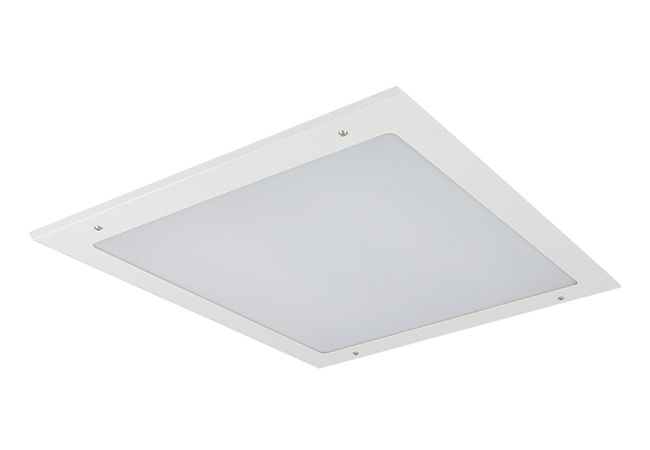
Fig 4: Low-glare luminaires
Additionally, glare can adversely impact students’ ability to read display boards and screens, or to focus on the teacher. Studies15 have identified the benefit afforded by therapeutic classrooms with stable, adjustable lighting environments that can improve the learning experience for students with neurodiverse needs by minimising sensory overload. LED solutions – which do not flicker or hum – can provide such adjustable lighting environments, offering flexibility in brightness and colour temperature.
Whether new-build or refurbishment, suitable LED luminaires are available that can cater to a wide range of educational applications. For example, Figure 1 illustrates an application that required a high-level installation to meet the varying lighting demands required for a multi-use gymnasium.
The LED luminaires shown in Figure 2 replaced a legacy system to provide task lighting above benches in a school laboratory, improving the quality of lighting and achieving a high uniformity of illuminance across the working plane, with diffuse light levels that minimised shadows.
Figure 3 indicates how an LED lighting system can be styled to accentuate the contemporary design of an existing entrance area, while maintaining the benefits of LED systems. Figure 4 is an application of a low-profile LED fitting, integrated into a modular false ceiling, where the optic is designed to deliver diffuse light to minimise shadows.
All these illustrated LED applications provide high luminous efficacy, and reduce operational costs through lower energy consumption and longer lifespan. The solutions also support institutional goals for sustainability by reducing carbon footprints.
It is beneficial to engage the operator and end user in the development and operation of lighting systems. Staff and students can significantly impact the operational success of an installation, so it is important that they have a decent understanding of the role and control of both natural and artificial lighting, and how to use adjustable lighting systems effectively.
By focusing on energy efficiency, human-centric design and therapeutic benefits, institutions can enhance student wellbeing, improve academic performance and achieve sustainability goals. A holistic approach to design can help ensure that lighting systems contribute towards the best possible environments for learning and development.
About the author
Tim Dwyer
- Thanks to Nicola Lloyd, of Tamlite, for her enthusiastic research assistance]
References:
- Kephalopoulos, S, SINPHONIE – Schools Indoor Pollution and Health Observatory Network in Europe database on chemical and biological pollutants, European Commission, Joint Research Centre (JRC) 2020 – bit.ly/CJSep24CPD1
- Baloch, R M, et al, Daylight and school performance in European schoolchildren, International Journal of Environmental Research and Public Health, 2021 – bit.ly/CJSep24CPD2
- Heschong, L, et al, Daylighting impacts on human performance in school, J Illum Eng Soc 2002.
- Mott, MS, et al, Illuminating the effects of dynamic lighting on student learning, SAGE Open, 2012.
- Sleegers, P J C, et al, Lighting affects students’ concentration positively: Findings from three Dutch studies, Lighting Research & Technology, 2013 – doi.org/10.1177/1477153512446099
- SLL LG5 Lighting Guide 5: Lighting for Education, CIBSE, 2011 (currently under revision).
- School Output Specification Technical Annex 2E- Daylight and Electric Lighting, UK DfE 2022 – bit.ly/CJSep24CPD3
- BS EN 12464-1:2021 Light and Lighting – Lighting of Workplaces – Part 1: Indoor Workplaces, BSI 2021.
- Illuminating Engineering Society. ANSI/IES RP-3-20, Recommended Practice: Lighting Educational Facilities, IES, 2020.
- Winterbottom, M and Wilkins, A, Lighting and discomfort in the classroom, Journal of Environmental Psychology, 2009 – bit.ly/CJSep24CPD4
- Wessolowski, N, et al, The effect of variable light on the fidgetiness and social behavior of pupils in school, Journal of Environmental Psychology, 2014 – bit.ly/CJSep24CPD5
- Hartstein, L E, et al, Light correlated color temperature and task switching performance in preschool-age children: preliminary insights, PLoS ONE, 2018 13(8), e0202973 – doi.org/10.1371/journal.pone.0202973
- Sleegers, P J, et al, Lighting affects students’ concentration positively: findings from three Dutch studies, Lighting Research & Technology, 2013 – doi.org/10.1177/1477153512446099
- Hawes, B K, et al, Effects of four workplace lighting technologies on perception, cognition and affective state, International Journal of Industrial Ergonomics 2012 – doi.org/10.1016/j.ergon.2011.09.004
- Black, M H, et al, Considerations of the built environment for autistic individuals: A review of the literature, Autism 2022 – doi.org/10.1177/13623613221102753
